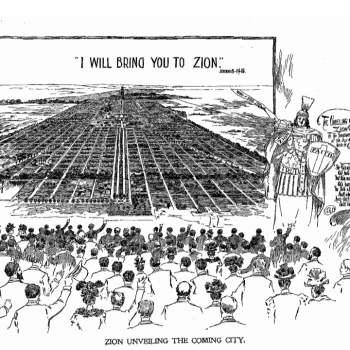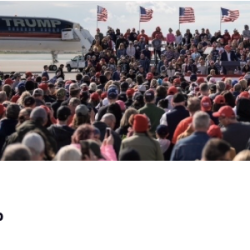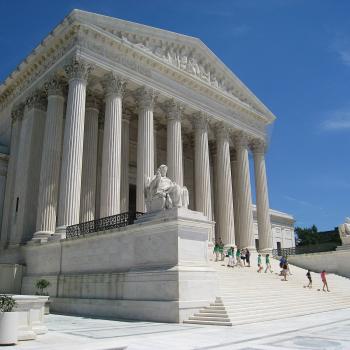Dan Hummel is a historian and works at Upper House, a Christian study center on the campus of the University of Wisconsin-Madison. He is author of Covenant Brothers: Evangelicals, Jews, and U.S.-Israeli Relations (University of Pennsylvania Press, 2019). His current project, under contract with Eerdmans, is a history of the rise and fall of dispensationalism from 1800-2020.
***
Is there such a thing as “cosmopolitan evangelicalism,” and is it worth talking about? As a historian of American evangelicalism, I can only recall reading the term a few times—in D. Michael Lindsay’s Faith in the Halls of Power (2008), where he gives it some sociological heft; in Lydia Bean’s The Politics of Evangelical Identity (2014) comparing Canadian and U.S. evangelicals; in the epilogue to David Swartz’s Facing West (2020); and in Charlie Cotherman’s recent history of the Christian study center movement, To Think Christianly (2020).
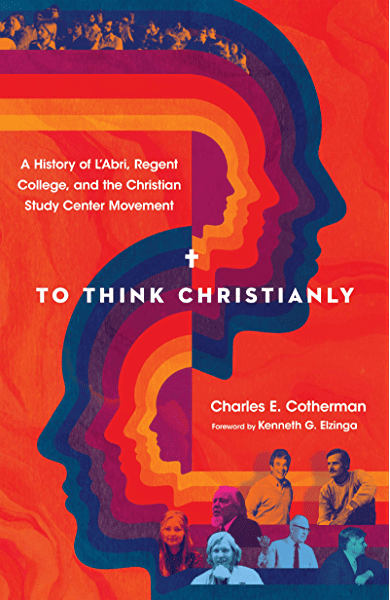 I work at a Christian study center at the University of Wisconsin-Madison, so Cotherman’s reference piqued my interest. Sketching the recent history of study centers, which are mostly located on large R1 campuses (like UW-Madison, University of Minnesota, University of Virginia, University of North Carolina), Cotherman warns that the elite status of these campuses threatens to constrict the reach of the study center movement. “Unless the university-based study center movement expands its scope to include a larger more diverse pool of universities,” he writes, “it will continue to highlight the division between what Michael Lindsay describes as ‘cosmopolitan’ and ‘populist’ evangelicalism” (268).
I work at a Christian study center at the University of Wisconsin-Madison, so Cotherman’s reference piqued my interest. Sketching the recent history of study centers, which are mostly located on large R1 campuses (like UW-Madison, University of Minnesota, University of Virginia, University of North Carolina), Cotherman warns that the elite status of these campuses threatens to constrict the reach of the study center movement. “Unless the university-based study center movement expands its scope to include a larger more diverse pool of universities,” he writes, “it will continue to highlight the division between what Michael Lindsay describes as ‘cosmopolitan’ and ‘populist’ evangelicalism” (268).
This distinction, perhaps useful when describing study centers or the “evangelical faculty lounge,” is largely absent from the current conversations of scholars defining white evangelicalism. As the “faculty lounge” metaphor implies, cosmopolitans, where they do exist, are regarded as small in number and meager in influence. The most recent work on evangelicals from Robert P. Jones, Kristen Kobes du Mez, and Andrew Whitehead and Samuel Perry, among many others, speak in unison: the “populists” are defining evangelicalism at the moment and, retrospectively, perhaps they always have. Confidence has been eroded in the “Bebbington Quadrilateral,” which defines evangelical identity on theological terms conducive to how cosmopolitans like to talk about evangelicalism. Instead, white evangelicalism is defined by the decidedly un-cosmopolitan characteristics of Christian nationalism, xenophobia and racism, and cults of unhealthy masculinity.
If we grant for a moment that there is something called “cosmopolitan evangelicalism”—in the faculty offices of Wheaton and Baylor, in the editorial meetings of InterVarsity Press and Christianity Today, and among small study centers in college towns—is it worth talking about? Writers like Michael Gerson have hoped to highlight a cosmopolitan tradition to illustrate that not all evangelicals were or are populists, or that the true evangelicals aren’t represented by figures like Jerry Falwell, Jr. But here again, if we take the lead of recent scholarship, this seems to be an unconvincing argument belied by statistics and the new studies of evangelicalism.
Some days, especially when work at the study center is humming, I think it is self-evident that there is an extensive and underappreciated cosmopolitan network that has significantly influenced key aspects of evangelical discourse and practice. This is especially the case in non-Christian spaces, such as public universities, were dozens or hundreds of faculty and thousands of students identify as evangelical but comprise a small subset of their communities. On these days I tell myself that complaints of cosmopolitan feebleness, usually by cosmopolitans themselves, are no different than the laments of other classes of elites who constantly bemoan the limits of their influence. But on other days the network seems much smaller, its reach more circumscribed, and its future defined by Cotherman’s warning of being too detached and too self-referential.
I’ve gestured towards many of the reasons to minimize or ignore cosmopolitan evangelicalism: the apparent minority views they espouse, their overrepresentation in past accounts of evangelicalism, their numerical inferiority. But what might be the case for defining a relevant cosmopolitan evangelicalism? How would we even define it?
Take my place of work, Upper House. It is part of a longer history of postwar evangelical study centers on American university campuses. Historically, these study centers have been agents of a loosely shared cosmopolitan evangelicalism. They have encouraged pluralism in the tradition of Leslie Newbigin, rather than wage culture wars on university campuses. Contra Jamie K. Smith’s supposition that the “evangelical mind,” where it can be found, is located in confessional bodies, study centers have tended to work outside denominational structures. They have grown rapidly in recent years (Upper House was founded in 2015) and now have a national consortium.
 “Cosmopolitan” does not necessarily mean “liberal” or “progressive.” What cosmopolitan denotes are the priorities and practices of a subculture. Following Lindsay’s schematic, cosmopolitan evangelicals are sociologically distinct (they “travel frequently, are involved in the arts, and live affluent lifestyles”); they possess cultural power (often affiliated with universities, “have greater access to powerful institutions, and the social networks they inhabit are populated by leaders in government, business, and entertainment”); and they eschew large-scale action and mass politics in favor of invited or “exclusive gatherings” or at least ones that bring together “social and professional peers” that have as their aim not immediate conversions but cultural legitimacy and cultivating long term influence (Faith in the Halls of Power, 218-222).
“Cosmopolitan” does not necessarily mean “liberal” or “progressive.” What cosmopolitan denotes are the priorities and practices of a subculture. Following Lindsay’s schematic, cosmopolitan evangelicals are sociologically distinct (they “travel frequently, are involved in the arts, and live affluent lifestyles”); they possess cultural power (often affiliated with universities, “have greater access to powerful institutions, and the social networks they inhabit are populated by leaders in government, business, and entertainment”); and they eschew large-scale action and mass politics in favor of invited or “exclusive gatherings” or at least ones that bring together “social and professional peers” that have as their aim not immediate conversions but cultural legitimacy and cultivating long term influence (Faith in the Halls of Power, 218-222).
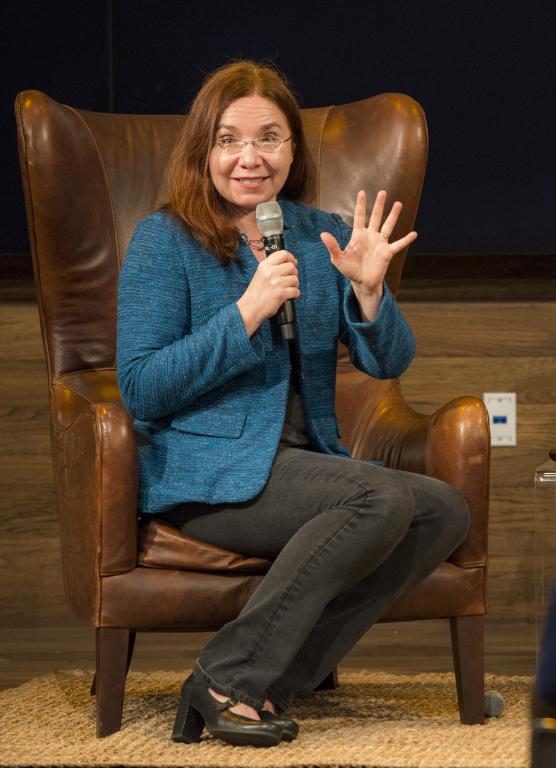
Lindsay’s sociological description informs the theological and cultural focus of cosmopolitan evangelicalism, which combines concerns that on their own could be categorized as “liberal” or “conservative” but together make up the distinctive priorities of cosmopolitans. Taking our Upper House programming as an example, we work closely with an organization, Science for the Church, that is advocating for Christian congregations (including evangelicals) to better engage science. A list of UH’s recent speakers includes Katherine Hayhoe, evangelical climate scientist; Kathy Cramer, political scientist here at UW-Madison; Darren Dochuk, historian of evangelicalism and capitalism; and Yale theologian Willie J. Jennings. We have hosted John Inazu to speak on pluralism and religious freedom, and evangelist R. York Moore on, well, evangelism. Last week we hosted Jemar Tisby as a Veritas Forum speaker.
These priorities are rooted in a distinct intellectual backdrop. Cotherman’s history of the Christian study center movement elucidates many of the network influences and nodes, from Regent College in Vancouver, to Intervarsity Christian Fellowship, to scholarly networks of Reformed, Wesleyan, and Anglican varieties. The guiding lights are not Jerry Falwell, Jr., Robert Jeffress, or Paula White, or even The Gospel Coalition or Wayne Grudem. Instead, cosmopolitan evangelicals look to the work of Soong-Chan Rah, N.T. Wright, and Fleming Rutledge; the AND Campaign’s Justin Giboney and Michael Wear, and the new work of Esau McCaulley, Kelly Nikondeha, Marylin McEntyre, among many other disparate voices.
It bears repeating that much of the cosmopolitan activity is to be found outside of partisan or otherwise overtly political discourse. According to the recent fall books issue of Christian Century, two of Zondervan’s best-selling books in 2020 are N.T. Wright’s Collected Essays and Constantine R. Campbell’s Paul and the Hope of Glory, both works of New Testament studies. Eerdmans’ top selling book of 2020 is Lisa M. Bowens’ African American Readings of Paul. Outside of books, ventures like BibleProject attract millions of views (in multiple languages) for each of their videos. The Christian contemporary music world also has its cosmopolitans, from the music of Jon Foreman, Sara Groves, and Sandra McCracken, to the Rabbit Room, a group of Christian artists based in Nashville.
“That’s a nice little network” someone recently told me when I finished listing these names. It was not meant as a compliment. Perhaps drawing the circle beyond the “faculty lounge” to include study centers, independent artists, and a bunch of InterVarsity, Zondervan, Baker Academic, and Eerdmans authors doesn’t change the calculation much. But perhaps it is notable how much of the institutional infrastructure of evangelicalism is run by cosmopolitan types, from those Christian presses, to many of the Christian colleges, universities, and seminaries, to Christianity Today. Organizations like World Vision, the National Association of Evangelicals, Intervarsity Christian Fellowship, and Made to Flourish fall into this category. And plenty of local churches craft identities that, to varying degrees, embrace some form of the above cosmopolitans.
One very crude way to see the cosmopolitan appeal more broadly is to consult an Amazon best seller lists. Of the many relevant subcategories, I checked on the “History of religion and politics” list (where history is defined loosely). Some predictable populist names topped the list, including Phil Robertson’s (of Duck Dynasty fame) Jesus Politics, Mike Huckabee’s The Three C’s that Made America, and David Horowitz’s Dark Agenda. Another striking populist entry is Mark Taylor’s The Trump Prophecies, which taps into the enduring interest in popular eschatology among rank and file evangelicals.
 But books appealing to cosmopolitan evangelicals had a strong showing. Tisby’s The Color of Compromise is fifth, and judged by numbers of reviews easily outperforms the book by Huckabee or books by Eric Metaxas. The new study by Robert P. Jones, White Too Long, is in the top ten, as is du Mez’s Jesus and John Wayne. Du Mez’s book outperforms Al Mohler’s The Gathering Storm, a perhaps more useful comparison because they both were released in June 2020 (and Mohler is a subject in du Mez’s book). Others in the top echelon include Mark Charles and Soong-Chan Rah’s Unsettling Truths, Giboney, Wear, and Chris Butler’s Compassion & Conviction, and Eric Mason’s Woke Church. Tisby’s forthcoming How to Fight Racism is already in the top fifty and does not release until 2021.
But books appealing to cosmopolitan evangelicals had a strong showing. Tisby’s The Color of Compromise is fifth, and judged by numbers of reviews easily outperforms the book by Huckabee or books by Eric Metaxas. The new study by Robert P. Jones, White Too Long, is in the top ten, as is du Mez’s Jesus and John Wayne. Du Mez’s book outperforms Al Mohler’s The Gathering Storm, a perhaps more useful comparison because they both were released in June 2020 (and Mohler is a subject in du Mez’s book). Others in the top echelon include Mark Charles and Soong-Chan Rah’s Unsettling Truths, Giboney, Wear, and Chris Butler’s Compassion & Conviction, and Eric Mason’s Woke Church. Tisby’s forthcoming How to Fight Racism is already in the top fifty and does not release until 2021.
This admittedly unrepresentative sample can be explained away. Perhaps cosmopolitan evangelicals are overrepresented among book buyers. Perhaps populists use other means besides Amazon to buy their books. Perhaps this subcategory is not indicative of wider evangelical tastes. Perhaps books are a poor way to judge religious identity.
But perhaps there is something to the list that returns us to the bigger question: is there a coherent cosmopolitan subculture in American evangelicalism worth mentioning? Are these examples—the institutions, the networks, the books—just blips of little consequence, too insignificant to bring to bear on conversations about the definition of evangelicalism, or is there something there? In other words, is cosmopolitan evangelicalism a worthwhile thing to talk about, or is it just a glitch in a populist “matrix,” like the all-encompassing Matrix, to be serve the needs of the system, like the Architect explains to Neo?
The point is not to Pollyannishly search for a respectable and salvageable evangelical identity. It is not to redefine our ways out of historical complicity or to reduce the very real commonalities all white evangelicals share. One question that could emerge from a better appreciation of the scope cosmopolitan evangelicalism is why, given its infrastructure, has it had seemingly minimal effects on large swaths of popular evangelicalism? Another: how old of a phenomenon is cosmopolitan evangelicalism, and is there any sense of historical growth, stagnation, or declension? Whatever the questions, perhaps now more than ever, when it is least convenient to do so, we should think about what “white evangelical” misses in its now widespread usage.





